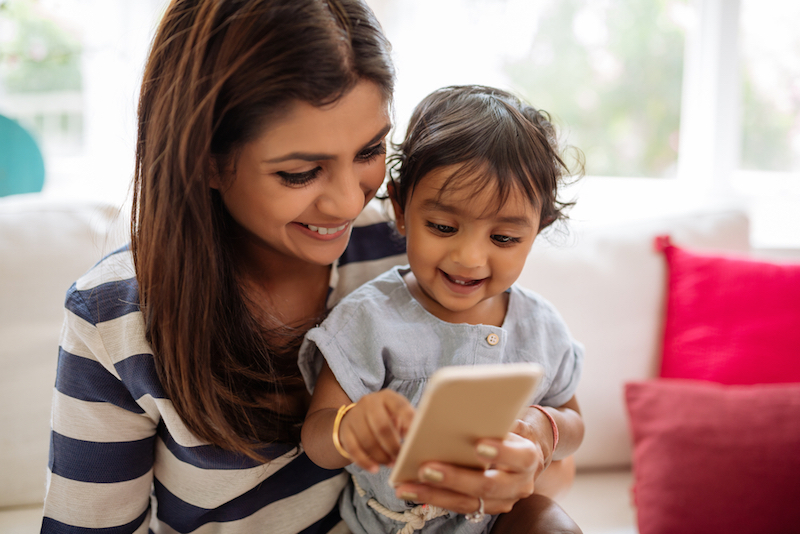No Digital Divide: Mobile Media Plentiful in Low-Income Families

Babies and toddlers are spending plenty of time using mobile media devices at their homes, including children whose families are not well-off financially, a new study reveals.
The researchers looked at families with children under age 4 in an urban, low-income, minority community, and found that nearly all the children had access to popular electronics, such as televisions, computers, smart phones and tablets. The investigators also found that children's use of these devices began at very early ages.
In other words, the study found basically no evidence of a "digital divide" in this impoverished community, said Dr. Matilde Irigoyen, chief of pediatrics and adolescent medicine at Einstein Medical Center in Philadelphia, and a lead author of the study. The term "digital divide" refers to the gap in access to technology when comparing wealthier people to those with fewer resources.
"Decreasing disparities in the digital divide is a good thing," Irigoyen said. Having access to mobile devices at a young age and learning how to use this technology proficiently is a first step to digital literacy, she said. [7 Signs Your Child Is an iPad Addict]
Pervasive tech
In the study, the researchers surveyed the parents of 350 young children ages 6 months to 4 years at a pediatric clinic in a low-income neighborhood of Philadelphia in 2014. The researchers found that 97 percent of the neighborhood's households had televisions, 83 percent had tablets and 77 percent had smartphones. In addition, more than half the households had video game consoles, computers and Internet access.
Almost every parent and child in the survey had access to a mobile device, and the technology was very pervasive, Irigoyen said.
Sign up for the Live Science daily newsletter now
Get the world’s most fascinating discoveries delivered straight to your inbox.
Mobile devices were not only common in these households, but they also got plenty of use by the very young children. Most kids had used a mobile device by their first birthday, primarily to watch a video, play a game or use an app, according to the study published online today (Nov. 2) in the journal Pediatrics.
The findings showed that three-quarters of the children in the survey owned a mobile device by age 4, whereas half of the 4-year-olds had their own TV sets.
Most 3- and 4-year-olds could use media devices without help, and they each spent about an hour a day on the devices..
A benefit of early digital exposure is that it can increase a young child's educational access, Irigoyen told Live Science.
But mobile media may not always be used for educational purposes. About two-thirds of parents in the study said they gave the devices to their children to keep them calm or give them something to do when the adults needed to complete household chores. About one-third of parents said they used the devices to put their children to sleep.
The researchers said they were surprised at how often young children used these devices, how many of the kids used the devices daily and how many parents were using mobile media at their children's bedtime, Irigoyen said.
As the littlest users of mobile devices got older, they were more likely to use digital media independently and were often given their own personal devices, the study found.
The good news is that digital media use by young children has more advantages than does watching TV, Irigoyen said. Mobile media is more portable; the content can be streamed, and it can be interactive, especially when parents and young children use these devices together, which adds value to the experience, she said.
However, the American Academy of Pediatrics discourages the use of all forms of media by children under age 2. Irigoyen noted that this policy was written before the introduction of tablets to the market, in 2011.
As of now, the research on how young children and families are using mobile media, and how it affects these groups, has not caught up with the technology's widespread use, Irigoyen said.
Follow Live Science @livescience, Facebook & Google+. Originally published on Live Science.
Cari Nierenberg has been writing about health and wellness topics for online news outlets and print publications for more than two decades. Her work has been published by Live Science, The Washington Post, WebMD, Scientific American, among others. She has a Bachelor of Science degree in nutrition from Cornell University and a Master of Science degree in Nutrition and Communication from Boston University.









